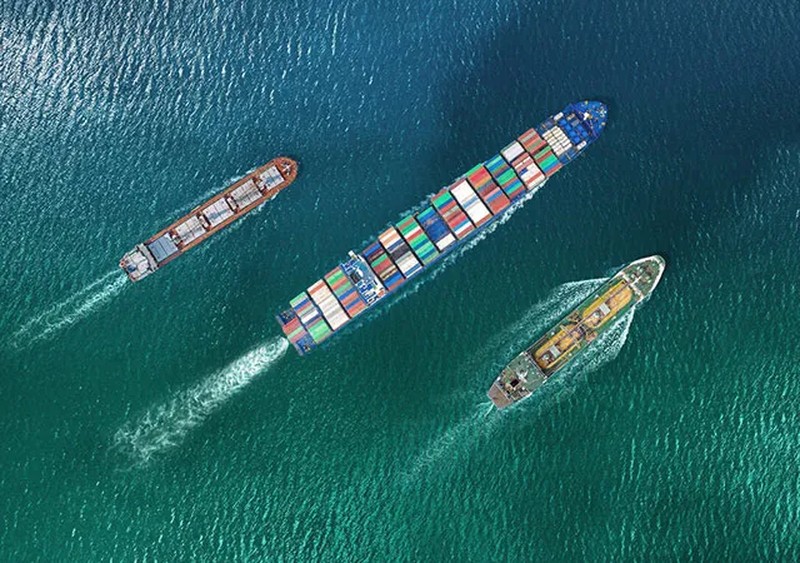Engineering the Seas: The Evolution and Future of Ship Design

Introduction: Shaping the Future of Maritime Engineering
The art and science of ship design have evolved dramatically over the centuries. From simple wooden vessels navigating coastal waters to massive steel giants crossing oceans, ship design reflects human innovation and technological progress. Today, as the maritime industry faces challenges like sustainability, automation, and digital transformation, ship design continues to redefine what’s possible on the seas. This article explores the evolution, technological milestones, and future trends that are steering the course of modern naval architecture.
The Origins: Early Innovations in Ship Design
Shipbuilding dates back thousands of years, with the earliest designs focused on functionality rather than efficiency. Ancient civilizations like the Egyptians, Phoenicians, and Greeks used reed boats and wooden galleys to transport goods and wage war. These early designs relied heavily on manpower and wind propulsion, with minimal understanding of hydrodynamics.
By the Middle Ages, shipbuilding evolved with the introduction of the caravel and galleon, incorporating advanced hull shapes and multiple sails for better maneuverability. This era laid the groundwork for modern ship design principles — stability, buoyancy, and resistance — which continue to guide engineers today.
The Industrial Revolution: Steel, Steam, and Speed
The 19th century marked a turning point in maritime history. The transition from wood to iron and steel hulls revolutionized durability and ship size. The introduction of steam engines freed vessels from dependence on wind, allowing for faster and more reliable voyages.
Naval architects began using mathematical models to design hulls that minimized drag and improved fuel efficiency. The Titanic and other great liners of the early 20th century showcased both the potential and limitations of ship engineering — pushing designers to prioritize not only luxury and power but also safety and survivability.
Modern Ship Design: Efficiency and Innovation
Today’s ship design is a fusion of engineering precision, digital modeling, and sustainability. Using Computer-Aided Design (CAD) and Computational Fluid Dynamics (CFD), engineers can simulate water flow, structural stress, and fuel consumption before construction even begins.
Modern vessels, from container ships to naval destroyers, integrate lightweight materials, optimized hull forms, and hybrid propulsion systems. These innovations aim to reduce fuel consumption, emissions, and maintenance costs, while maximizing cargo capacity and operational lifespan.
The concept of modular shipbuilding has also transformed how ships are constructed. By fabricating different sections separately and assembling them in shipyards, companies can shorten build times and improve quality control.
Sustainability: The Green Revolution in Ship Design
As climate change drives global regulations, ship designers are under pressure to create environmentally responsible solutions. The International Maritime Organization (IMO) has set strict emission targets, motivating shipbuilders to adopt green technologies.
Key sustainability trends include:
- Alternative Fuels: Use of LNG (Liquefied Natural Gas), methanol, ammonia, and hydrogen for cleaner propulsion.
- Electric and Hybrid Ships: Integration of battery systems to supplement or replace conventional engines.
- Hull Coatings and Aerodynamics: Advanced materials that reduce friction and biofouling, improving fuel efficiency.
- Renewable Energy Integration: Solar panels, rotor sails, and wind-assist technologies are making ships more energy-efficient than ever.
Sustainable ship design is not just about compliance — it’s a competitive advantage in a market increasingly driven by environmental awareness.
Digital Transformation: Smart Ships and Automation
The next frontier in ship design is digitalization. Smart ships, equipped with IoT sensors and AI-driven navigation systems, are transforming maritime operations. Engineers now design ships that can collect real-time data on performance, weather, and maintenance needs.
Autonomous ships, capable of navigating with minimal human intervention, are also on the horizon. Companies like Rolls-Royce and Kongsberg are already testing fully autonomous vessels that promise safer, more efficient, and cost-effective maritime transport.
These advancements rely heavily on cybersecurity, data analytics, and digital twins — virtual replicas of ships used for predictive maintenance and performance optimization.
The Future of Ship Design: A Fusion of Science and Sustainability
Looking ahead, the future of ship design lies in harmonizing technology, environment, and economics. Ships of the future will likely be self-sustaining ecosystems, featuring:
- AI-assisted navigation and decision-making systems
- Carbon-neutral propulsion methods
- Fully recyclable materials and modular designs
- Integration with smart port infrastructure
As nations expand their maritime trade and defense capabilities, the demand for smarter, greener, and safer ships will only grow. Collaboration between engineers, environmental scientists, and digital innovators will define the next era of naval architecture.
FAQs
Q1: What is the most important factor in modern ship design?
Modern ship design prioritizes efficiency and sustainability. This includes optimizing hull forms, using eco-friendly fuels, and integrating advanced digital technologies.
Q2: How does technology influence ship design today?
Technologies like CAD, AI, IoT, and CFD allow designers to simulate and optimize every aspect of a vessel before production, leading to safer, faster, and greener ships.
Q3: What are autonomous ships?
Autonomous ships use artificial intelligence and sensor networks to navigate and operate with minimal human control, enhancing safety and reducing operational costs.
Q4: How are ship designers addressing environmental issues?
By adopting green technologies, alternative fuels, and efficient propulsion systems, ship designers are actively reducing the maritime industry’s carbon footprint.
Final Words: Engineering the Future Waves
The evolution of ship design tells a story of human ingenuity — from ancient sailboats to smart, eco-friendly vessels navigating global waters. As digital technology and sustainable engineering converge, the future of ship design will be defined by innovation, responsibility, and resilience. The seas may be vast and unpredictable, but through intelligent engineering, we continue to master them — one design at a time.













